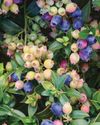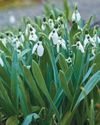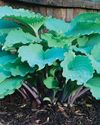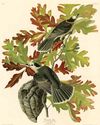
Marigolds, sweet alyssum and violet-colored bearded iris. These are the garden scents of my childhood that immediately transport me back to my mother's garden. Hydrangeas remind me of my aunt; she grew one that magically bloomed pink, blue and purple all at once. The image of gorgeously pink 'Helen Elizabeth' poppies in a sea of Johnson's Blue' geranium conjures days at my beloved old perennials-nursery job.
This is the way it has always been with plants for me. Whether it's their scent or their blossom, some get forever associated with cherished places or those who adored or shared them. Even in my fortieth year of gardening, I have iris and primula from my childhood.
I know many other gardeners still lovingly nurturing decades-old, treasured plants for these very reasons. We love plants for their flower and foliage, but our connection goes way beyond this. Plants bind us to places and people and to our past.
I met Elisabeth Sheldon in my 30s, and she remained a friend and mentor for decades. Before becoming a gardener and establishing a field-grown perennials nursery in 1978, she was a painter. Her color sensitivity and sense of balance and drama became critical elements in her gardens. She designed her borders in classic blue, pink, purple, pale yellow and white, with a generous sprinkling of gray. She kept her hot palette within a sunny walled space, just off a meandering path adjacent to a luscious woods garden. She and her nursery, Ridge House Garden, where she started plants from British and other seed exchanges, ran far ahead of the big perennial wave that hit the United States in the 1980s and '90s, and her passion and plants helped inspire and educate many who became lifelong gardeners.
Above: Elisabeth Sheldon wrote three books on gardening and design, sharing lessons from her own borders and her perennials nursery.
This story is from the July - August 2023 edition of Horticulture.
Start your 7-day Magzter GOLD free trial to access thousands of curated premium stories, and 9,000+ magazines and newspapers.
Already a subscriber ? Sign In
This story is from the July - August 2023 edition of Horticulture.
Start your 7-day Magzter GOLD free trial to access thousands of curated premium stories, and 9,000+ magazines and newspapers.
Already a subscriber? Sign In

Pot It Up
Shake up the containergarden with theseNorth America –native perennials

THE GARDEN PATH TO PERDITION
I WAS CRUISING RIGHT ALONG, feeling okay about myself, when I came across a list of the Seven Deadly Sins.

A Productive PATIO
Tiny fruit, vegetable and herb plants help gardeners maximize any sort of growing space

TROPICAL FUSION
A FUSS-FREE APPROACH TO USING BOLD TROPICAL PLANTS IN ANY TEMPERATE GARDEN

WINTER READING
Pass the time with any of these inspiring books

SENSING A PATTERN
Greg Coppa reflects on an odd weather year and what continued warming may mean for his Rhode Island garden

TOP-PRIZE PERENNIALS
A foliage masterpiece for shade and a late bloomer for sun

MARK WESSEL
What's new for fruit and vegetable gardeners?

KINGS OF THE NORTHERN FORESTS
A look at the trees, shrubs and perennial plants that bolster life in Ecoregion 5

PROJECT FEEDERWATCH
Gardeners can help scientists know just where the birds are in winter